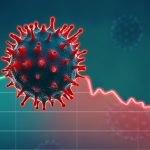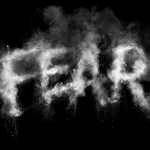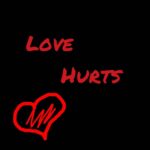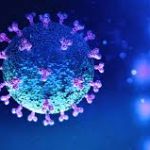
Risk and Radiation
We are all constantly exposed to various levels of radiation:
Life is all about risk assessment and management. To simply be alive is inherently risky. Every time we step outside, we risk possible injury or death: We might get hit by a truck; a tree might fall on us; we might get struck by lightning; someone might take us out in a drive-by shooting. Sure, some of these risks may be much less likely than others, but the question is, what risks are we willing to live with? And at what cost?
In their 1983 volume Risk and Culture Mary Douglas and Aaron Wildavsky discuss the issue of risk in the context of environmental protection, technological development, and economic growth. They say this in their opening paragraph:
Can we know the risks we face, now or in the future? No, we cannot; but yes, we must act as if we do. Some dangers are unknown; others are known, but not by us because no one person can know everything. Most people cannot be aware of most dangers at most times. Hence, no one can calculate precisely the total risk to be faced. How, then, do people decide which risks to take and which to ignore? On what basis are certain dangers guarded against and others relegated to secondary status?
Many will say at this point that we simply must trust the experts. But of course, what happens when the experts get it wrong, or when they disagree amongst themselves? Then who do we believe? Politicians also have to listen to the various “experts’ and decide the best policy options. But it is not just medical or scientific facts gleaned from others that can sway them. Their own political and ideological commitments will also come into play.
All this is again coming to the fore as Australia seems to finally be having a proper debate about the place of nuclear power in our energy mix. Peter Dutton has raised the prospect, and already he is being shouted down by all the usual suspects. See my earlier piece on this: https://billmuehlenberg.com/2024/06/21/on-nuclear-energy/
As to how we generate electricity and power to run our homes, cities, and nations, all the aspects are risky. Hydroelectric dams might burst; coal miners might get trapped as they work; and even wind turbines can fall – not to mention all the wildlife that are harmed by them.
And all that we do can be risky, from going for a walk to installing solar panels on our roofs. There are costs and benefits to all our activities. It is the same with the nuclear energy option. And concerns about safety can run high. My previous article has already looked at these matters in some detail.
Radiation
Part of the panic concerning nuclear energy is the mistaken notion that radiation is always bad and must be avoided like the plague. But this mindset is devoid of any understanding of the world we live in. The truth is, we live in a nuclear universe, with radiation all around us, all the time.
That is why Conley and Maloney title their new book, Earth is a Nuclear Planet. We are reminded that our “nuclear planet was born in a nuclear universe.” Let me offer a bit of science here. Early on the authors say this:
Be not afraid. Unless you were born and raised in a salt mine, you’ve been bombarded with radiation your entire life. Welcome to planet earth.
Cosmic rays are but one small example. These are mostly high-velocity protons from our sun, along with some high-energy gamma rays that come zooming down to us from beyond the solar system. Most swerve away upon entering that magnetosphere, but some still reached the planet surface. And if you’re in the way, they’ll zoom right through your body.
About 13% of the background radiation we encounter can be attributed to cosmic rays, and the less atmosphere there is above us the more intense the effect. People living at high elevations, people at cruising altitude, and astronauts get zapped by zoomies [radiation] worse than anyone. No one is left untouched….
We’ll be focusing on the zoomies that originate right here on earth. Categorised as alpha, beta, or gamma radiation, they come from inside an atom’s nucleus. That’s why zoomies are called sub-atomic particles – they are much smaller than any atom….
The enormous nuclei (centers) of uranium and thorium atoms are two examples of zoomie emitters. These heavy-metal elements, and the isotopes into which they decay, are found all over the world in rock, soil, and water. Only slightly radioactive, these atoms will throw off the occasional zoomie as they slowly transmute (change) into completely different elements, getting smaller and weaker over time. One of these elements is radium, which decays into the radon lurking in your basement and in morning dew.
Establishing sensible safety standards requires a thorough understanding of the effects of radiation on the human body. But just as important, it also requires that we update our understanding and our regulations as science and medicine evolve.
Zoomies are everywhere, and there is no escape. They’re in sunlight; they’re even in bananas, loaded with nutritious potassium. Most potassium (K-39) is radiologically inert. But a tiny percentage (0.012%) of any batch of potassium is radioactive K-40. This is why the average banana contains about 0.1 microSievert of radiation.
As a matter of fact, bananas are so radioactive that a truckload can set off alarms at a border crossing; so can avocados. The average avocado has a bit less K-40, at about 0.08 microSievert. The Department of Homeland Security (DHS) actually had to recalibrate their testing apparatus for incoming shipments….
Whatever subatomic particles an atom happens to emit – protons, neutrons, electrons, or gamma rays – the atom is classified as radioactive because it’s actively radiating zoomies. Even if it only ejects only one weak zoomie every hundred years, it’s still considered radioactive….
On modern-day planet earth the average background dose is about 3 mSv (milliSieverts) per year. But not to worry – our skin is a protective outer organ that shields our innards from most of the radiation we encounter. This is why the primary concern with nuclear material is inhaling or ingesting this stuff, rather than simply being around it. This also explains why we should seal any openings to avoid inhaling fallout particles after nuclear incident….
Obviously this highly-documented and referenced book of over 450 pages provides a whole lot more information like this that we need to be aware of. Other writers can also be mentioned here. English scientist and Christian Robert Dutch also devotes a good part of his recent book to these basic realities about radiation.


He titles his first chapter, “Our Nuclear and Radioactive Universe.” He says that nuclear energy and radioactivity are “part and parcel of our created universe.” He examines the creation account as found in the opening chapters of Genesis and goes on to say this: “God uses nuclear fusion to power his universe giving us heat and light. The stars are the origin of the elements from which we are created. Our universe is naturally radioactive.”
He examines how earth is exposed to cosmic radiation from the sun and space, and how it has its own protective mechanisms to deal with this. He then says this: “Living in this naturally radioactive world, our bodies take in radioactive material through inhalation and ingestion (food and drink). And so we are naturally radioactive (as are other species). Natural radioactive material decays….”
He starts his second chapter on this issue with a quote from a team of German scientists:
Most people’s everyday perception of radioactivity is often shaped by the debate on how safe or risky nuclear power plants or nuclear waste repositories are…. it is only when the presence of material in their personal living environment is brought to their attention that they realise that besides radioactive materials from nuclear industries or medical treatment, other forms of radioactive substances also exist.
Dutch explores a number of these. For example, he looks at the odorless, tasteless and naturally occurring radioactive gas radon, which comes from “tiny levels of natural uranium in the soils, rocks, and building materials.” But he reminds us that we are all exposed to varying levels of radiation from so many sources. He is worth quoting at length:
In addition to breathing in radon and thoron gas, we also take natural radioactive material into our bodies through ingestion. Food is naturally radioactive and so is water!
For example, carbon-14 (C-19, half-life 5,730 years) is produced in the atmosphere from cosmic radiation interacting with nitrogen. It then enters plants and so comes into the human food chain as we eat the plants. However, other naturally occurring radionuclides are also ingested in our food. Radioactive potassium-40 (K-40, half-life 1.3 billion years) occurs as a small percentage by weight in all potassium on Earth. It is taken into our bodies, which maintain a fairly constant level of potassium-40.
Radionuclides in the natural uranium and thorium series also irradiate the population, with lead-210 (Pb-210) and polonium-210 (Po-210) making the main contributions. For example, the population is exposed from consumption of vegetables, meat, dairy products, fish, and cereals. Drinking water is another route for exposure via natural radioactivity in water, including radon. The average dose estimated from intake of naturally occurring radionuclides (excluding radon and thoron gas) is 0.27 mSv per year (11 percent of the total average dose).
Some foods can contain higher levels of natural radioactivity. Brazil nuts, for example can have enhanced levels of radium isotopes (e.g., radium-226, half-life 1,600 years) and the 2010 PHE review notes that eating 100 g of Brazil nuts gives a dose estimate of 0.01 mSv. Finally, the 2010 review noted that just smoking one cigarette per day for a year gives a dose of about 0.018 mSv (mainly from lead-210 and polonium-210 in tobacco leaves, which are not removed during manufacture).
Another source of natural radiation exposure is from gamma radiation coming from rocks and soils. This is a terrestrial source. The tiny levels of radioactive uranium (and thorium) that are naturally present in the Earth’s soil and rocks undergo radioactive decay over long periods of time into what are called decay products; in the process they give off emissions of gamma rays that irradiate us. Radioactive potassium-40 is also present.
The exposure we receive depends on the concentration of the radioactive materials in rock formations and the building materials used for our homes. So these gamma radiation exposures contribute to what is called the natural background dose. UK surveys have established the level of exposure from terrestrial gamma radiation. The average annual dose estimate (from time spent indoors and outdoors) is about 0.35 mSv (13 percent of the total average dose).
As mentioned, life is all about risk and risk taking. Every time you get in your car or board an airplane you take risks. And even good things are risky. Consider medical treatment. As my wife and I certainly learned during the past few years, medical exposure to radiation is part of how we get through life, whether from X-rays, CT scans, or radiation therapy used in treating cancer patients.
And even something like walking through Grand Central Station in New York City exposes you to low levels of radiation from the granite and marble building materials used. Most books on the topic of course mention this, as do the two volumes I cite here. One article on this is worth quoting from:
Did you know? Grand central station produces more radiation than allowed in a nuclear power plant. Grand Central Station gives you a dose of radiation when you go through it, thanks to the granite used to build it.
Well, radiation is a part of the natural world, and so things made with natural materials often contain radioactive elements. In the case of Grand Central Station, the natural material is granite. All natural rocks contain traces of radioactive elements, but granite contains more than others, and certain specimens of granite contain especially high concentrations.
It’s worth noting that if Grand Central Station were a nuclear power plant, it would be shut down for exceeding the maximum allowable annual dose of radiation for employees. That being said, it’s not actually a dangerous place. You can enjoy all that beauty in every inch of the terminal relaxed and amazed. https://piccolanewyorker.com/blog/2018/9/24/grand-central-station-is-more-radioactive-than-a-power-plant
All this needs to be understood and taken into consideration when we think about whether nuclear energy should be part of the mix for power generation in Australia.
[2091 words]




















Conley and Maloney said “unless you were born and raised in a salt mine…” Not necessarily, if the mine is not well ventilated you could be breathing in the ubiquitous radioactive gas – Radon! All very natural BTW, like the underground Grand Central Station I suspect. Haha. Good article to get some balance!
Thanks Tim.
Hi Bill,
It would seem rather obtuse for people who were perfectly okay with, nay, demanding that, poorly tested gene therapy drugs and “vaccines” ought to be injected into everyone’s veins, to now be worried about radiation from nuclear reactors which have had over 60 years of testing and research behind it.
I’m just saying…..
I am with you Joel!
Renewables are for Rich People – Dick Smith
Thanks Dallas.